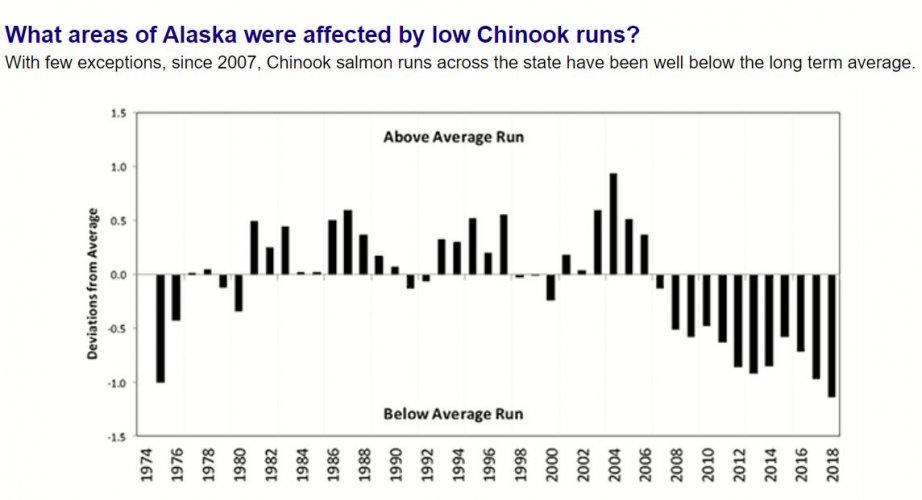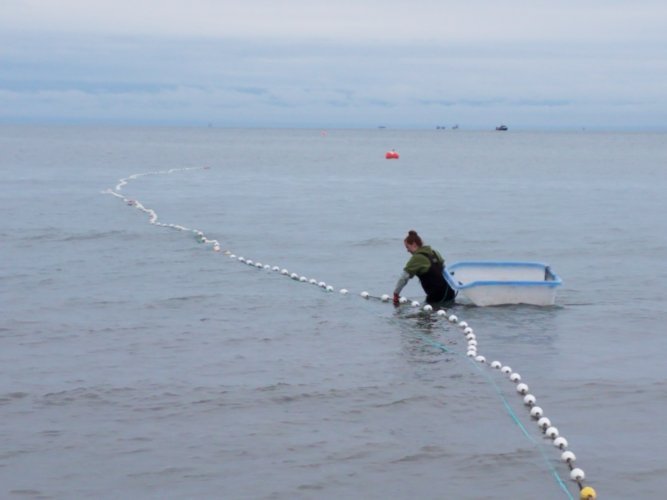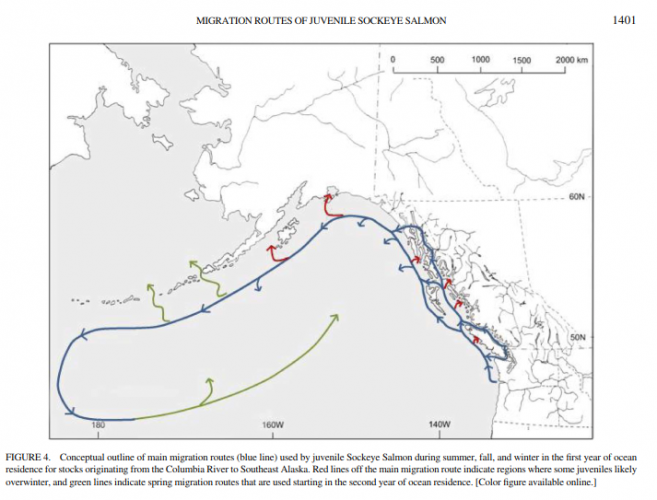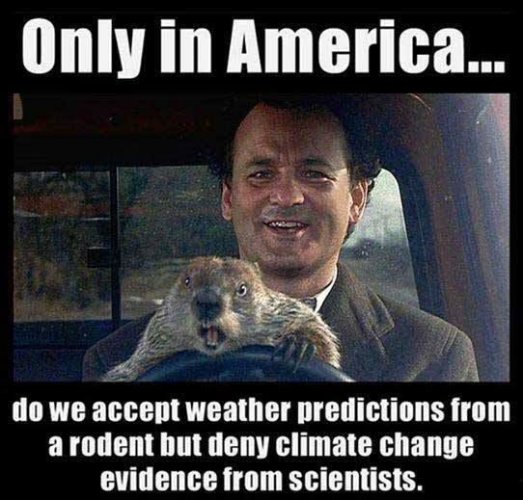AlaskaHunter
Well-known member
It is clear that in general, spawning Alaska salmon are getting smaller and the declines are most stark for Chinook or King salmon.
These changes are especially pronounced in the past 15-20 years, mostly due to younger age class at spawning.
source:
https://alaskasalmonandpeople.org/topics/the-declining-size-and-age-of-salmon/
https://www.nature.com/articles/s41467-020-17726-z
https://www.alaskajournal.com/busin...-finds-30-year-decline-chinook-size-statewide
For the state of Alaska, the trend in spawning run size has not been good:
source: https://www.adfg.alaska.gov/index.cfm?adfg=hottopics.lowchinookruns_info
Low 2021 runs of King (Chinook) Salmon continues in many drainages in Alaska:
Cumulative Counts
River 2021 2020 2019
Gulkana 24 132 2,988
Nushagak 2,228 7,814 15,945
Kenai Kings restricted to catch & release,
Anchor River and Deep Creek closed to fishing by emergency order
Nushagak-Mulchatna Drainages King Salmon limits reduced by emergency order
Subsistence and personal use fishing has been closed within the Yukon River drainage (including the Tanana River drainage).
These changes are especially pronounced in the past 15-20 years, mostly due to younger age class at spawning.
source:
https://alaskasalmonandpeople.org/topics/the-declining-size-and-age-of-salmon/
https://www.nature.com/articles/s41467-020-17726-z
https://www.alaskajournal.com/busin...-finds-30-year-decline-chinook-size-statewide
For the state of Alaska, the trend in spawning run size has not been good:

source: https://www.adfg.alaska.gov/index.cfm?adfg=hottopics.lowchinookruns_info
Low 2021 runs of King (Chinook) Salmon continues in many drainages in Alaska:
Cumulative Counts
River 2021 2020 2019
Gulkana 24 132 2,988
Nushagak 2,228 7,814 15,945
Kenai Kings restricted to catch & release,
Anchor River and Deep Creek closed to fishing by emergency order
Nushagak-Mulchatna Drainages King Salmon limits reduced by emergency order
Subsistence and personal use fishing has been closed within the Yukon River drainage (including the Tanana River drainage).







